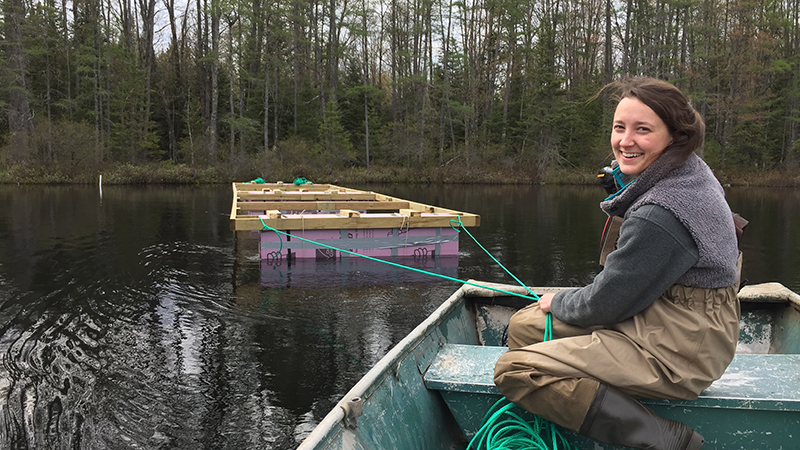
By Ronica Stromberg
Carly Olson grew up in the Land of 10,000 Lakes, surrounded by but never seeing the fascinating aquatic life she would one day build a career upon.
The aquatic life eventually catching her eye wasn’t the famed walleye of Minnesota but zooplankton. In particular, Olson became interested in the microscopic crustaceans that feed on algae and then serve as fish food themselves.
Although she had grown up fishing and swimming in lakes and streams, she learned of the existence of zooplankton only after trying to sign up for a pre-veterinarian class at the University of Wisconsin-La Crosse.
When she couldn’t get into the already-full class, she took a class in marine biology instead.
“I took that course, and I was hooked,” she said. “I was like, ‘Yup, this is it.’”
With a microscope, she could see the many zooplankton that help balance the food web in inland waters and help keep these ecosystems healthy.
“It really just was like, ‘There's this whole other world to discover and learn about.’ That was just really fascinating to me,” she said.
Olson went on to earn her bachelor's degree in biology with an emphasis in aquatic science in Wisconsin. She then earned her doctorate in biological sciences at the University of Notre Dame. She now works with Jessica Corman as a postdoctoral researcher on a stoichiometry project funded by EPSCoR and teaches limnology, the study of inland waters.
In late July and early August, she will teach a three-week, three-credit limnology course at the Cedar Point Biological Station near Lake McConaughy in western Nebraska. She taught it last summer for two weeks but extended it another week after students suggested she do so in follow-up surveys about the class.
Read the rest of the story and see more images of Carly at https://snr.unl.edu/aboutus/what/newstory.aspx?fid=1162